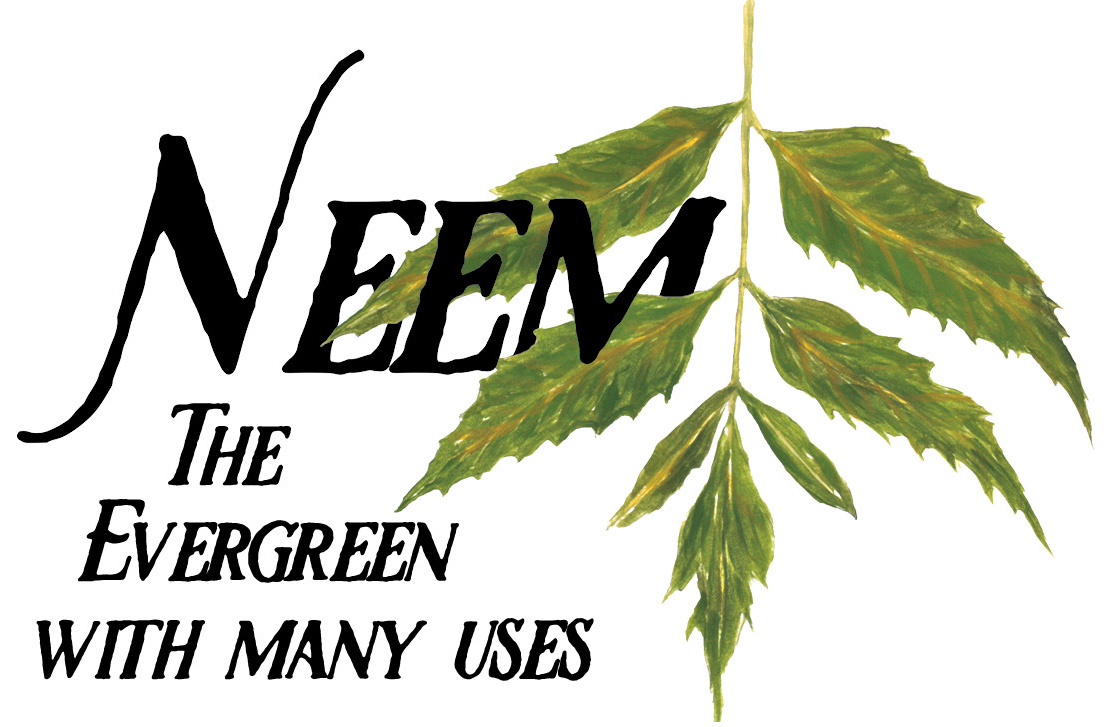
By Gretchen Schempp
The neem tree is a member of the Meliaceae family and is indigenous to India and South Asia. The tree has spread throughout drier lowland tropical and subtropical regions of Africa, the Middle East, the Americas, Australia and South Pacific islands. The leaves are used as medicine and are available year round as the tree is an evergreen.
Neem has been used traditionally for many centuries and in India is known as “the village pharmacy” for all of its uses. Multiple studies have shown neem oil to have anti-inflammatory, antibacterial, antiseptic, antioxidant and anti-fungal properties. Neem oil is also rich in fatty acids making it an excellent moisturizer.
Oral Uses
Because of its antibacterial and antiseptic properties and ability to strengthen immune function, studies show that using neem for oral care can help to prevent gum disease, treat gingivitis and prevent plaque buildup. In one clinical study 50 patients with advanced gingivitis were treated. 40 of the people suffered from bleeding gums and pustular discharge from the gum. The patients were instructed to brush their teeth twice daily with neem toothpaste. After just 3 weeks 80% of them showed significant improvements. All patients had lower levels of bacteria and bad breath had disappeared. Another study done in Germany used 70 patients with periodontis in different stages. The study reports similar results after only five to ten treatments with neem toothpaste and mouthwash.
Skin, Hair and Nails
Neem is often used in soaps, salves and lotions to treat various skin conditions. Due to its antifungal properties neem has been helpful for many in fighting athlete’s foot, nail fungus and ringworm. Other skin conditions people have found neem to be helpful with areeczema, psoriasis, chicken pox, rashes, boils, wounds and acne. Neem is sometimes used as a natural preservative in cosmetics as well as to benefit many skin conditions. Along with fighting nail fungus, neem is also been said to help prevent splitting and breakage in nails.
Neem also shows up in some hair care products. The oil is used to condition hair, treat dandruff and deter head lice. Beauty By Nature by Brigitte Mars even touts neem as having pediculocide (lice killing) properties.
Neem Oil and Insects
Mixed in a base of coconut oil, neem shows promise as a reliable mosquito repellent. It can be applied directly to the skin though studies show it is more effective when blended with coconut oil. Don’t count on neem to work all day like DEET would. However, applied frequently, neem can be an effective alternative to potentially harmful chemicals.
Neem has also been gaining popularity as a repellent for ticks and fleas. I personally use neem when I go into the woods or garden and have found it to be an effective tick and mosquito repellent. Neem is also safe to use on pets as a means of flea and tick protection. The oil rubbed on the coat of your pet not only can protect them from insects but gives their coat a lustrous look and feel. Be advised that neem does degrade in UV light so it will need to be reapplied.
Many gardeners have found neem applied to plants repels the biting, chewing and sucking garden pests. Due to a hormone-like action from the neem oil, pests “forget” to eat after being in contact with trace amounts of neem. It is also the presence, the slightest scent of neem, that can keep away leaf eating insects. Neem oil can be a powerful antifeedant and insect repellent. Due to neem’s degradation in sunlight it can be used as a systemic insecticide. Meaning that you can pour a dilution into the soil and the plant will absorb it. They will take it up in their tissue and it will work from the inside.
Alaffia’s unrefined Neem oil is available in our first aid section.



